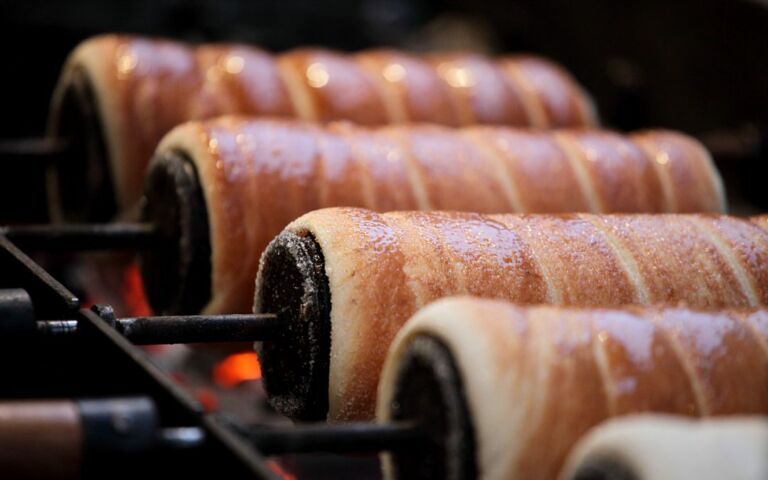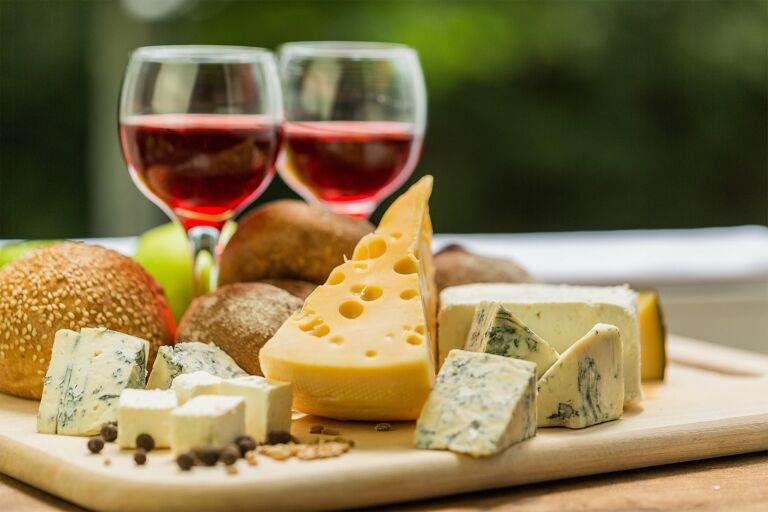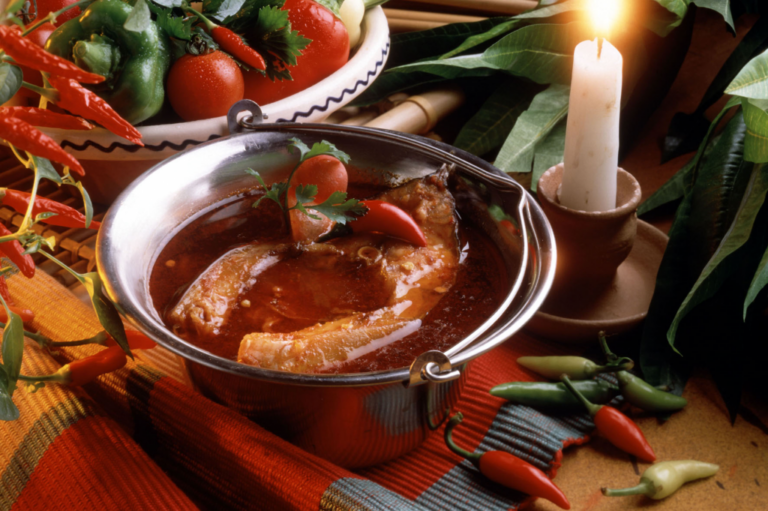Hungarian goulash – Enjoy the true taste of Hungary
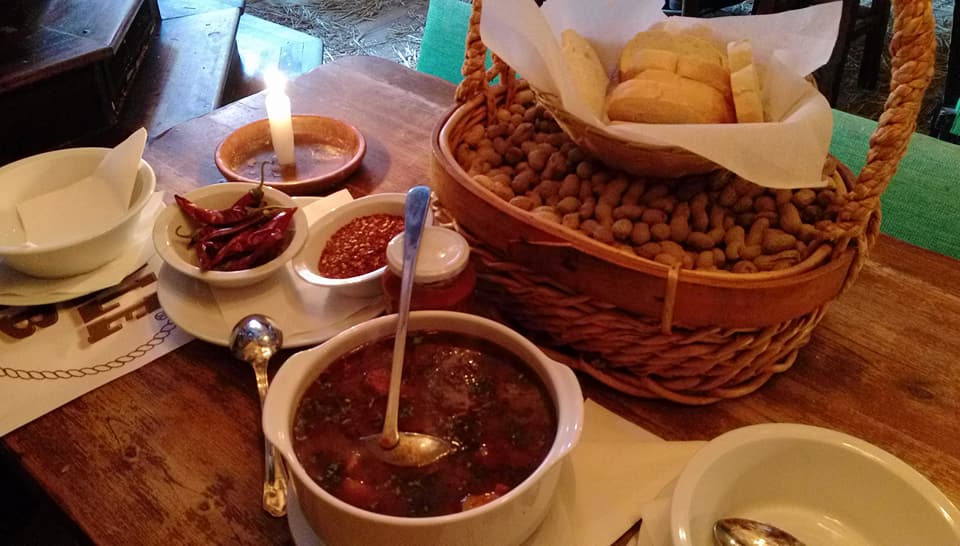
Traditional Hungarian goulash – a true taste of Hungary
If there’s one dish that captures the spirit of Hungarian cuisine, it’s gulyásleves (goulash soup). This hearty, paprika-rich soup has humble origins among Hungarian herdsmen but has become one of the most beloved national dishes and a proud Hungarikum since 2017.
What exactly is goulash, the national dish of Hungary?
The Hungarian word gulyás originally meant “herdsman,” referring to the cattle keepers of the Great Hungarian Plain (Alföld). They cooked a simple meat stew over an open fire in cast-iron kettles (bogrács). Over time, this evolved into today’s rich soup, flavored with paprika and vegetables.
It’s important to note: in Hungary, gulyás always means a soup. The thicker, stew-like dishes tourists often confuse with goulash are actually called pörkölt or paprikás.
- Gulyásleves (goulash soup): hearty broth with meat, vegetables, and noodles (csipetke).
- Pörkölt: thick meat stew without much liquid.
- Paprikás: similar to pörkölt, but finished with sour cream.
This distinction is useful for travelers dining in Hungary. Asking for “goulash” abroad might get you a stew, but in Budapest you should say gulyásleves if you want the authentic soup.
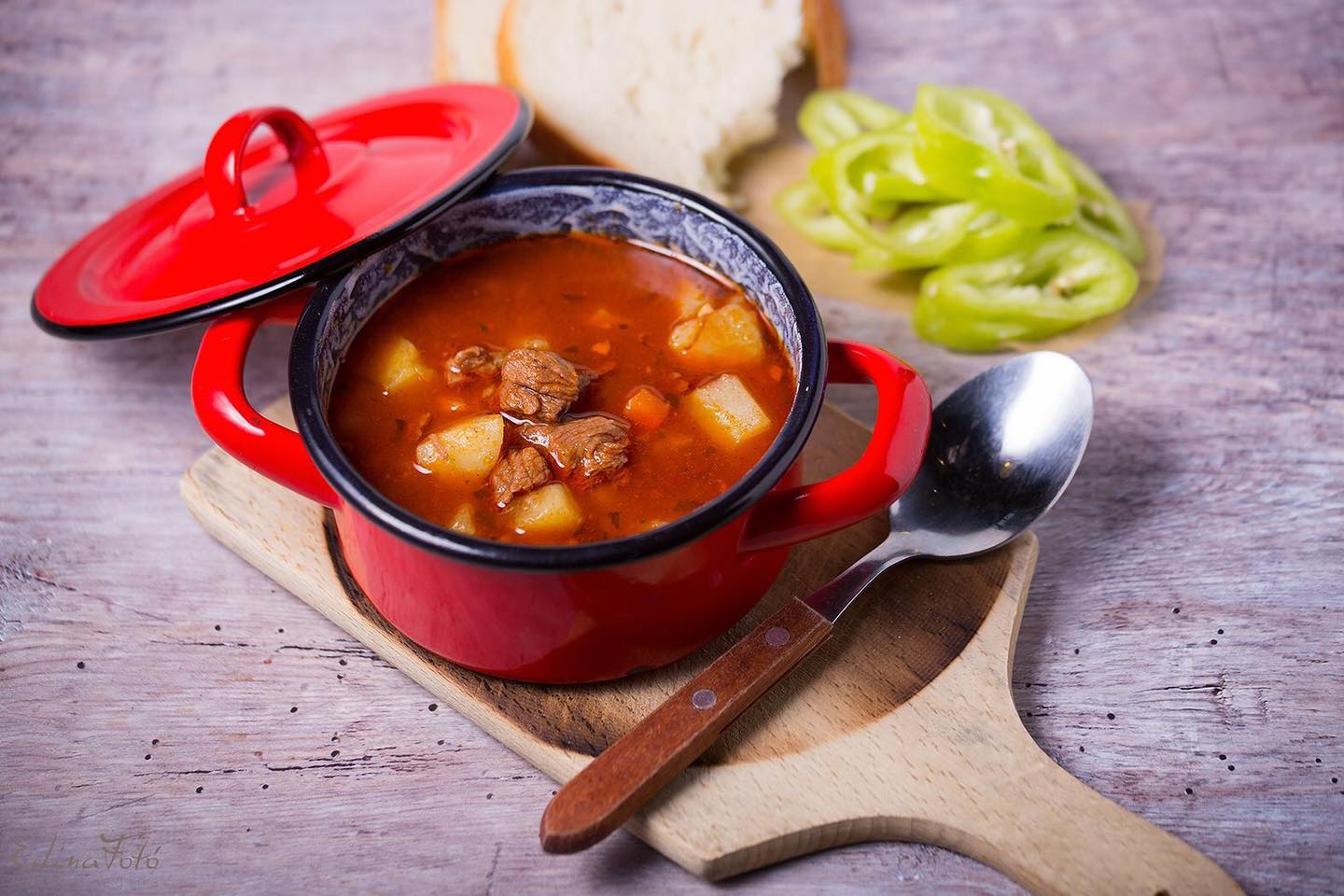
The story of gulyás
The roots of the delicious Hungarian goulash reach back several centuries. Hungarian herdsmen spent months in the open fields, driving cattle across the plains. Their meals had to be nourishing, simple, and easy to cook over a fire. They relied on beef, onions, water, and whatever vegetables were available. With the arrival of paprika in Hungary in the 18th century, the dish gained its vibrant red color and distinct flavor.
By the 19th century, gulyás had become a symbol of Hungarian identity, particularly during the nationalist movements. Serving or cooking gulyás was a way of expressing pride in Hungarian traditions, especially under Habsburg rule. Today, it remains a point of national pride and a dish every Hungarian family knows well.
Typical ingredients for a great recipe
Traditional Hungarian gulyás includes:
- Beef (commonly shin, shoulder, or chuck)
- Onions, carrots, parsley root, and celery root – these give the broth its depth
- Hungarian yellow peppers (TV paprika) – pale yellow, sweet peppers
- Potatoes – make the soup hearty
- Garlic and caraway seeds – signature flavors
- High-quality Hungarian sweet paprika (traditional spice from Szeged or Kalocsa)
- Csipetke – small, hand-pinched egg noodles added at the end
What makes gulyás truly Hungarian is not just the paprika, but also the balance of meat, vegetables, and broth. Unlike stews, the soup has a lighter consistency, though still filling enough to serve as a main course.
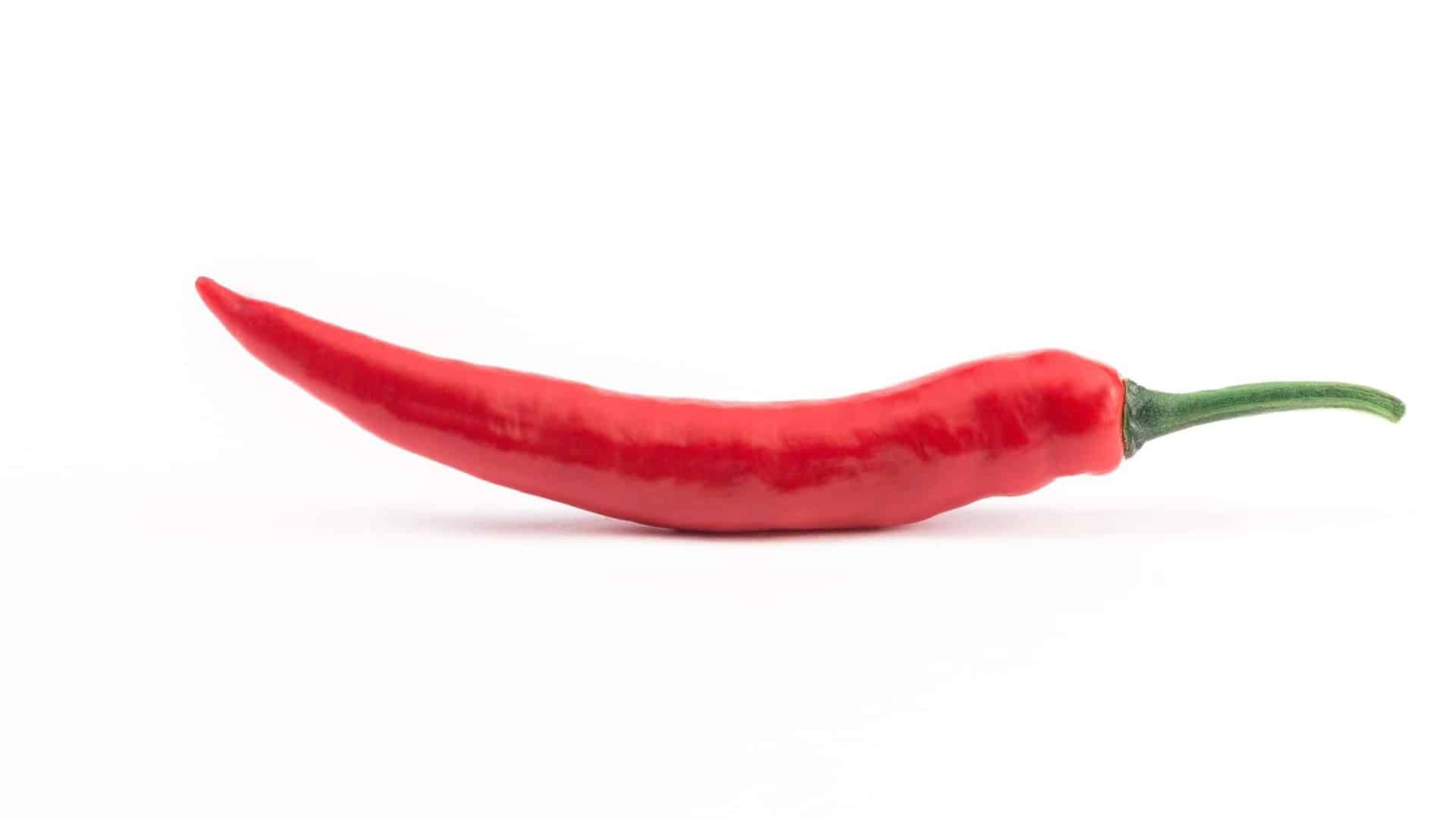
Regional variations
Hungary is small but diverse, and amazing goulash has local twists. Here are some variations of goulash:
- Alföldi gulyás (Great Plain style): the classic version, the traditional goulash rich in vegetables and paprika.
- Csángó gulyás: includes sauerkraut, giving the soup a tangy flavor.
- Bográcsgulyás: cooked outdoors in a kettle over fire – smoky and rustic, often a favorite at festivals.
- Palóc gulyás: a lighter version with green beans, named after the Palóc people of northern Hungary.
(Note: Beetroot or kale are not part of traditional Hungarian gulyás – those are likely mistranslations from foreign sources.)
Fun facts about Hungarian goulash
- Hungarikum status: Gulyás was officially recognized as a Hungarikum in 2017 – meaning it’s part of Hungary’s officially protected cultural treasures.
- Name origin: Gulyás originally meant “herdsman.” The word comes from gulya (cattle herd).
- Cooking tradition: The most authentic gulyás is still prepared outdoors in a cast-iron kettle (bogrács).
- Csipetke noodles: These small, hand-pinched noodles are unique to Hungarian soups. Tourists often mistake them for pasta, but they’re closer to tiny dumplings.
- Paprika pride: Hungary is one of the world’s leading producers of paprika – and Szeged and Kalocsa are its twin “paprika capitals.”
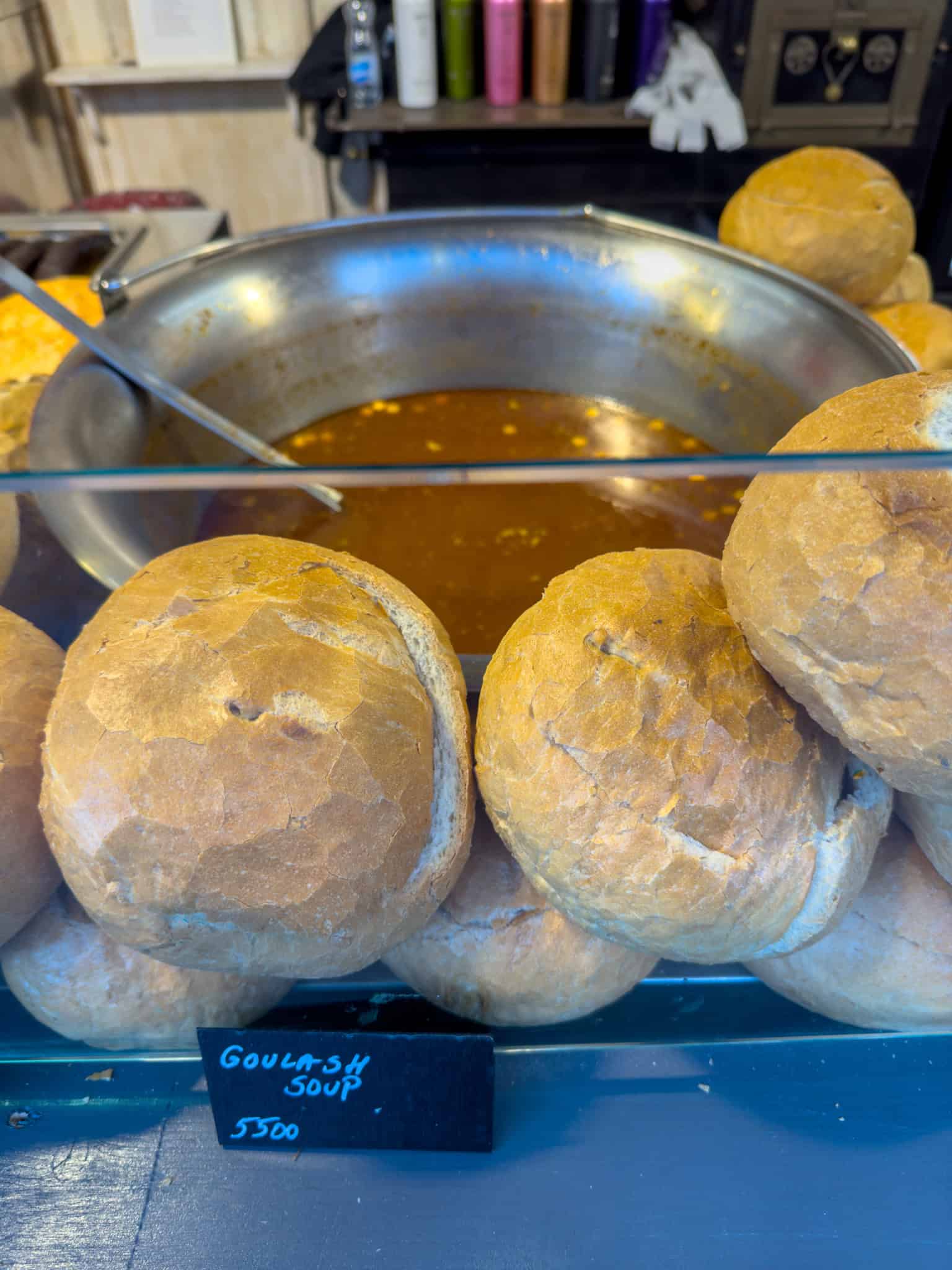
A tourist-friendly Hungarian goulash recipe (for 8–10 servings)
If you would like to make goulash, here are the ingredients of an authentic recipe:
- 1.5–2 kg beef (shin, shoulder, or chuck)
- 3 tbsp lard or oil
- 3 large onions, finely chopped
- 2 cloves garlic, minced
- 3 medium carrots
- 2 parsley roots
- ½ celery root
- 2 Hungarian yellow peppers
- 3–4 medium potatoes
- 2 tbsp Hungarian paprika powder (sweet)
- 1 tsp ground caraway seeds
- Salt and black pepper to taste
- Water (about 3 liters)
- Csipetke (pinched egg noodles)
- Bay leaf (optional)
Preparation:
- Heat fat in a large pot, sauté onions until golden.
- Add garlic and paprika, stir quickly so it doesn’t burn.
- Add beef cubes, brown them well.
- Season with salt, pepper, and caraway.
- Add chopped vegetables and cover with water.
- Simmer gently for 1.5–2 hours until meat is tender.
- Add potatoes and cook until soft.
- Drop in csipetke and cook for another 5–10 minutes.
Serve steaming hot with fresh bread – the perfect comfort food after a day of exploring Budapest.

Where to eat gulyás in Budapest
If you’d rather taste than cook, here are some excellent spots where you’ll find authentic gulyás:
- Gettó Gulyás (Wesselényi utca): a trendy spot in the Jewish Quarter, famous for its hearty goulash soup and other Hungarian classics. Tourists love it, but locals eat here too.
- Kéhli Vendéglő (Óbuda): a historic restaurant offering traditional gulyás with csipetke in an old-timey setting.
- Pest-Buda Bistro (Castle District): charming bistro with home-style Hungarian dishes, great after visiting Buda Castle.
- Winestone City Center (Váci utca): a modern bistro where you can try goulash alongside quality Hungarian wines.
These are all safe bets for tourists looking for authentic flavors without tourist-trap compromises.
Gulyás today – more than just a soup
While gulyás was once a herdsman’s meal, today it’s an important part of Hungarian hospitality. It’s a staple at family gatherings, weddings, festivals, and even political events. Cooking it outdoors in a bogrács is a social experience, often done in groups with plenty of pálinka and wine on the side.
For visitors, trying gulyás is more than a culinary experience – it’s a cultural ritual. Sharing a steaming bowl connects you with centuries of tradition, Hungarian pride, and the flavors of the Great Plain.
Final tip for visitors
When in Hungary, remember: if you want authentic gulyás, order gulyásleves. For a thicker dish, look for pörkölt or paprikás. And don’t forget the csipetke – it’s a uniquely Hungarian touch that makes the soup even more special.
If you arrive in Budapest and find yourself so hungry after your flight that you’d like to head straight to a great restaurant, make use of our airport transfer service – we’ll get you from the terminal to your table quickly and comfortably.
FAQ
What ingredients are essential for a traditional Hungarian goulash?
To make an authentic Hungarian goulash, you will need beef cubes, paprika, onions, garlic, carrots, and potatoes. Additionally, using quality Hungarian paprika will enhance the vibrant red color of the stew. Common spices include bay leaf (optional) and caraway seeds, which contribute to the traditional flavor profile.
How do you prepare the meat for a delicious goulash soup?
For a delicious Hungarian goulash, start by cutting beef chuck into chunks and browning them in a large pot. This step helps to develop rich flavors. Once the beef is browned, add onions and garlic, then stir in Hungarian paprika briefly and immediately pour in water to prevent it from burning. Add the remaining spices and vegetables, and let everything simmer gently until the meat is tender and the soup develops its rich, hearty taste.
Can you use a slow cooker to make Hungarian goulash?
Yes, you can definitely use a slow cooker to make Hungarian goulash. After browning the beef and sautéing the onions, transfer everything into the slow cooker along with the water, paprika, and vegetables. Allow it to cook on low for several hours until the beef is tender and the flavors meld together beautifully, resulting in a comforting meal.
What is the best way to serve Hungarian goulash?
Hungarian goulash is best served hot in bowls, with fresh bread on the side. The soup traditionally containscsipetke (small hand-pinched noodles), so there’s no need for extra pasta. Garnishing with a little fresh parsley is optional, but sour cream is not typically added to gulyás – that’s more common with dishes like chicken paprikash. This way, you enjoy the soup just as Hungarians do.


